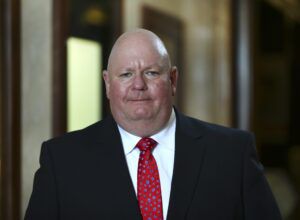The last 15 months were not short of new regulations and guidelines for ESG-related products. In addition, rating agencies and data providers reviewed their processes for the evaluation of ESG-related products.
These initiatives have been driven by increasing expectations on how ESG factors should be integrated in the selection and portfolio management process of funds and indices. In fact, investors need more clarity about the level of integration of ESG criteria in the selection process and the resulting portfolios since they want to avoid buying products which are practicing greenwashing. With regard to this, it is not surprising that investors use the different Articles (6, 8, and 9) of the Sustainable Finance Disclosure Regulation (SFDR) and ratings, as well as other classifications from data providers to select funds and ETFs for their portfolios. This means any change in the methodology of these measures will have an impact on investor behaviour.
The reshuffling started as market observers, investors, and their advisors in Europe became unsatisfied with the number of funds that claimed to be compliant with the Articles 8 and 9 of SFDR categories, since the investment approach of some of those funds seemed not to justify such a classification.
The first step was taken by Morningstar, which removed the ESG assignment from more than 1,200 funds in Europe in Q1 2022. This action was seen as a remarkable step by market observers, investors, and their advisors.
The second wave of the reshuffling was caused by the introduction of the regulatory technical standards (RTS) for the SFDR, since the RTS were much stricter than expected by index providers and fund promoters. As a result, the fund promoters in Europe “downgraded” a high number of funds from Article 9 to 8, as well as from Article 8 to 6. In this context, especially the downgrades from Article 9 products to 8, were disappointing for investors since they thought that the respective funds were compliant with the highest ESG standards and would therefore meet their requirements with regard to sustainable investing.
The next reshuffling will be caused by the change in the rating methodology for ESG rating by MSCI, which will be introduced in Q2 2023, as 1,066 ETFs will lose the highest rating. These downgrades may cause a shift in assets under management since investors who strive to invest in products with the highest rating may sell the downgraded products.
In addition to this, we may witness more reshufflings within the universe of ESG-related products since it looks like regulators are reviewing their current standards and may adjust their regulations to the market standards. If the new standards consider the availability of data for the respective evaluations, such a review might align the different local standards and will help to create a global standard for ESG investing.
All these actions show that ESG investing is still in the childhood phase. This means that regulators, index providers, and fund promoters are learning by doing. Even as this is not perfect, it seems to be the only possible way. As a result, market observers as well as investors and their advisors need to be patient, as such a process will take some time. Nevertheless, all actors in the ESG investing space need to mature fast to keep the faith of investors, which would be the worst case for all parties.
